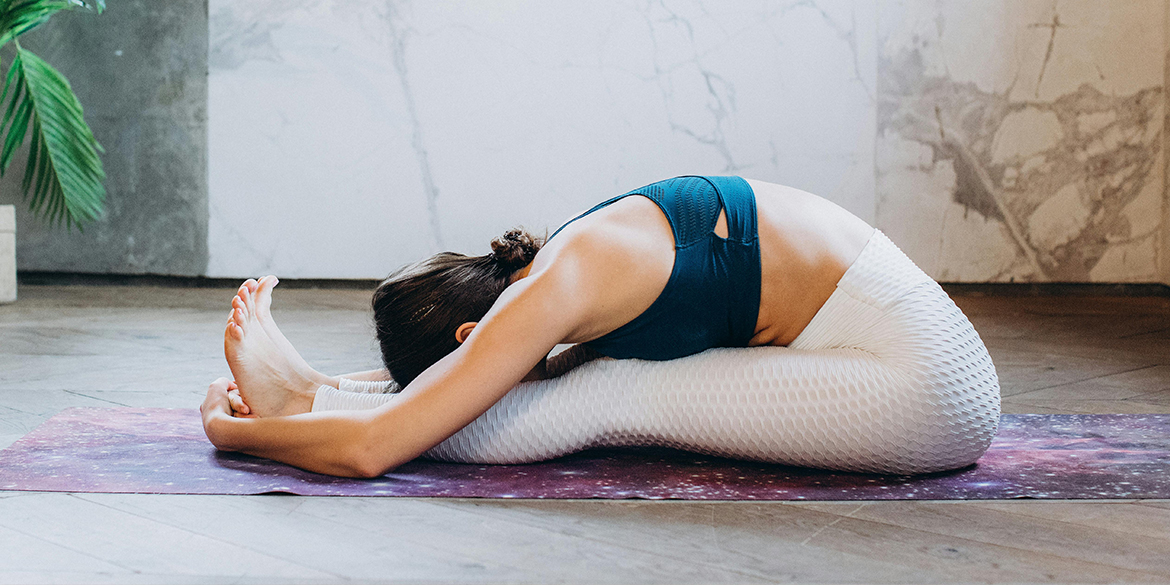
Paschimottanasana, or Seated Forward Bend, is a calming and restorative pose that stretches the entire back of the body, including the spine, hamstrings, and calves. This asana is known for its ability to calm the mind, relieve stress, and improve digestion, making it beneficial for individuals managing diabetes.
How to Perform Paschimottanasana:
1. Starting Position:
- Sit on the floor with your legs extended straight in front of you. Keep your feet together and flex your toes back toward your body.
- Sit up tall with your spine straight and shoulders relaxed.
2. Inhale and Lengthen:
- Inhale deeply, raising your arms overhead. Lengthen your spine, reaching through the crown of your head.
3. Exhale and Bend Forward:
- As you exhale, hinge at your hips and slowly bend forward, reaching for your feet or shins. Aim to keep your back straight as long as possible before rounding your spine.
- If you can, grasp your feet or hold onto your ankles. If you can’t reach your feet, hold onto your shins or thighs.
4. Relax and Hold:
- Keep your neck relaxed, allowing your head to hang or looking towards your legs.
- Hold the position for 20 to 30 seconds, breathing deeply and evenly. With each exhale, try to deepen the stretch slightly while maintaining comfort.
5. Release the Pose:
- To come out of the pose, inhale and slowly rise back up, lifting your torso back to a seated position.
- Stretches the spine and hamstrings: This pose provides a deep stretch to the back of the body, promoting flexibility in the spine and legs.
- Stimulates abdominal organs: Paschimottanasana massages the abdominal organs, including the pancreas, aiding digestion and helping to regulate blood sugar levels.
- Calms the mind: This pose is known for its calming effects, reducing stress and anxiety, which are important for managing diabetes.
- Improves blood circulation: The forward bend encourages blood flow to the abdominal area, which can enhance overall metabolism and energy levels.
- Relieves tension: It helps relieve tension in the back, shoulders, and neck, promoting relaxation throughout the body.
Precautions
- Avoid this pose if you have serious back injuries, herniated discs, or other spinal issues.
- Pregnant women should avoid deep forward bends, especially in later trimesters.
- If you have hamstring injuries or tightness, bend your knees slightly to avoid straining.
- Practice this pose with care if you have asthma, as the forward bend may restrict breathing.
Paschimottanasana is a wonderful addition to a yoga practice for those managing diabetes. Regular practice can enhance flexibility, support healthy digestion, and provide a soothing effect on the mind and body, contributing to overall well-being.
